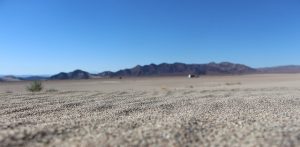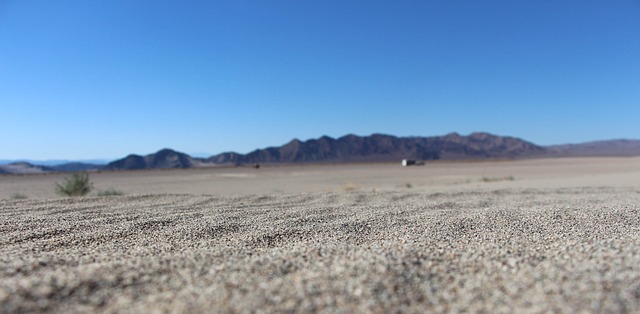
This week we read the parsha of Vayakhel. “Vayakhel Moshe {And Moshe gathered} the entire congregation of the children of Israel. [35:1]”
The Ramban explains that Moshe gathered them to tell them about the Mishkan {Tabernacle}. Moshe had been commanded about the Mishkan before the ‘chait ha’egel’ {sin of the golden calf} and the subsequent breaking of the luchos {tablets}. Now that the luchos shnios {second tablets} had been given and the relationship had been restored to the point that the Shchinah {Hashem’s Presence} would again agree to rest amongst them, Moshe now commanded them about the details of the Mishkan.
“Aileh had’varim {These are the things}-referring to the construction of the Mishkan, its vessels and the service performed there-that Hashem has commanded to do. Six days you shall do your work and the seventh day shall be holy for you, a Shabbos for Hashem. [35:1-2]”
Placed between the introduction to the command of the Mishkan and the command itself is the mitzvah {commandment} of Shabbos. Rashi explains that the warning to observe Shabbos was mentioned before the commandment to build the Mishkan in order to teach that one may not desecrate the Shabbos in order to build the Mishkan.
The Ramban illustrates how that same law can be derived even more clearly from the passuk {verse} itself. “These are the things-referring to the construction of the Mishkan, its vessels and the service performed there-that Hashem has commanded to do.” During the “six days you shall do your work” of “these things”-the building of the Mishkan-but “the seventh day shall be holy for you, a Shabbos for Hashem.” No work for the Mishkan can be performed.
The Talmud [Shabbos 70A] takes this connection between Shabbos and Mishkan much further. It derives from the above-quoted words, “aileh had’varim {these are the things},” the thirty-nine malachos {forms of constructive actions} which are forbidden on Shabbos. These parallel the thirty-nine malachos used in the construction of the Mishkan.
There is a clear parallel and association between Shabbos and the Mishkan. In order for us to truly emulate Hashem, we need to abstain on the seventh day from the ‘work’ that Hashem employed during the six days of creation. That is rendered impossible by the fact that it was Hashem’s Will which brought the world into its state of creation and not any form of ‘work’ present within our realm of existence. Therefore, in order for us to emulate Hashem’s rest, we must refrain from performing work that was done on something which most closely parallels creation. That is, of course, the Mishkan.
The creation is called ‘yesh mai’ayin.’ Something from nothing. We don’t create anything. We simply form and re-shape already existing materials. ‘Yesh mai’yesh.’ However, there was a point when man came closest to breaking the barriers of ‘yesh mai’yesh’ and entered the realm of a true transformation, dealing with ‘yesh mai’ayin.’ That was the building of the Mishkan.
Originally the world was in a state of pure G-dliness. Nothing else existed. In order to create an arena where there would be freewill, Hashem needed to remove His obvious presence from what we would later call the world. He needed to create a void where His presence would be hidden to the degree that one could deliberate and then ‘decide’ if there is a G-d or not. Spirituality was transformed into physicality.
The Baal HaTanya writes that, viewed in that context, the creation could be termed ‘ayin mai’yesh.’ Nothing was created from something. With Hashem’s presence being the ultimate reality, the ultimate ‘yesh,’ creating a void where that reality was no longer evident, an ‘ayin,’ a lack of reality, was in fact creating ‘ayin mai’yesh.’ Physicality, ‘ayin,’ from spirituality, ‘yesh.’
Rav Shimshon Raphael Hirsch zt”l writes that the building of the Mishkan was actually the process of creation in reverse. Hashem made His Presence harder to discern in order for us to use our freewill to discern that Presence. The spiritual was turned into physical only to afford us the opportunity to transform that physical back into spiritual. The Mishkan was the place for that re-transformation. The physical materials of the Mishkan became a place upon which Hashem’s Presence rested in a clearly discernable way. Reality was created from a void. Spirituality from physicality. G-dliness from gold and silver. “Yesh’ from ‘ayin.’
The creation was a form of ‘yesh’ from ‘ayin.’ The Mishkan was a form of ‘yesh’ from ‘ayin.’
The thirty-nine types of malacha that were used in the construction of the Mishkan mirror the creation of the world. On Shabbos, the seventh day, Hashem ‘rested’-He stopped turning spirituality into physicality. We too need to rest on the seventh day, thereby emulating our Creator. The closest similarity to the ‘work’ of creation is the work that was done on the Mishkan. On Shabbos we refrain from performing any of those thirty-nine malachos, distancing ourselves from playing any role in the actions which mirror the transformation of the spiritual into the physical. Rather, all of our efforts are focused on sanctifying the physical and elevating it into the spiritual realm.
The Mishkan actually parallels creation in an even more basic sense. The purpose of both was to have Hashem’s presence rest upon the lower realm. Through the Mishkan, Hashem’s presence was meant to rest, not simply on the building but rather on each and every one of us. “Make for me a Mikdash and I will dwell amongst you [25:8],” not upon it. Shabbos is the time of perfection-the time when Hashem’s presence is revealed in the creation and upon us.
“The seventh day shall be holy, a Shabbos for Hashem.”
Good Shabbos,
Yisroel Ciner
Mazel tov to Mr. Shlomo Greenwald and Miss Charon Bohbot on the occasion of their marriage. May their house be a Mikdash m’at {a microcosm of the Tabernacle} upon which the Shchinah will rest.
Copyright © 1998 by Rabbi Yisroel Ciner and Project Genesis, Inc.
The author teaches at Neveh Tzion in Telzstone (near Yerushalayim).


